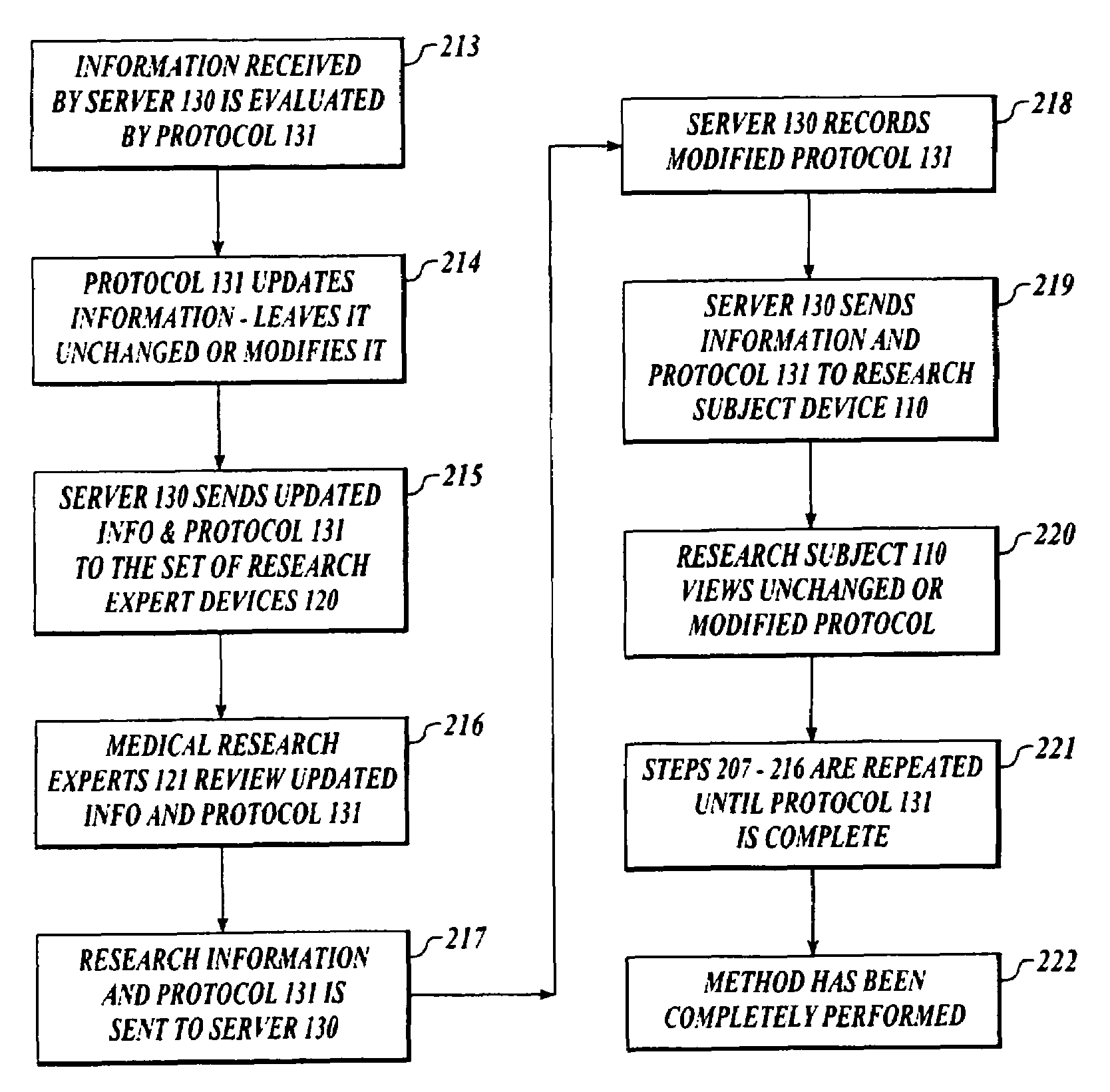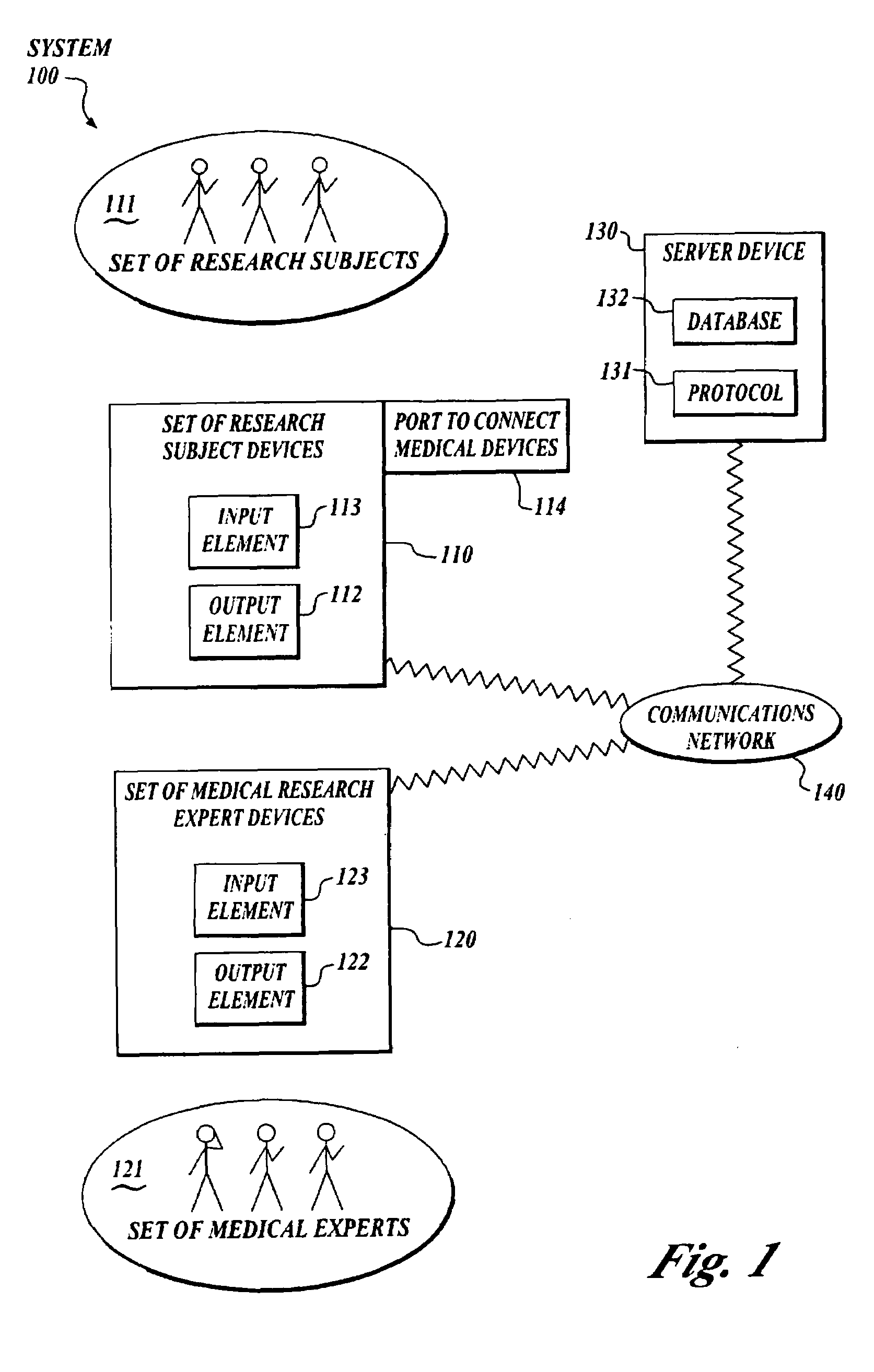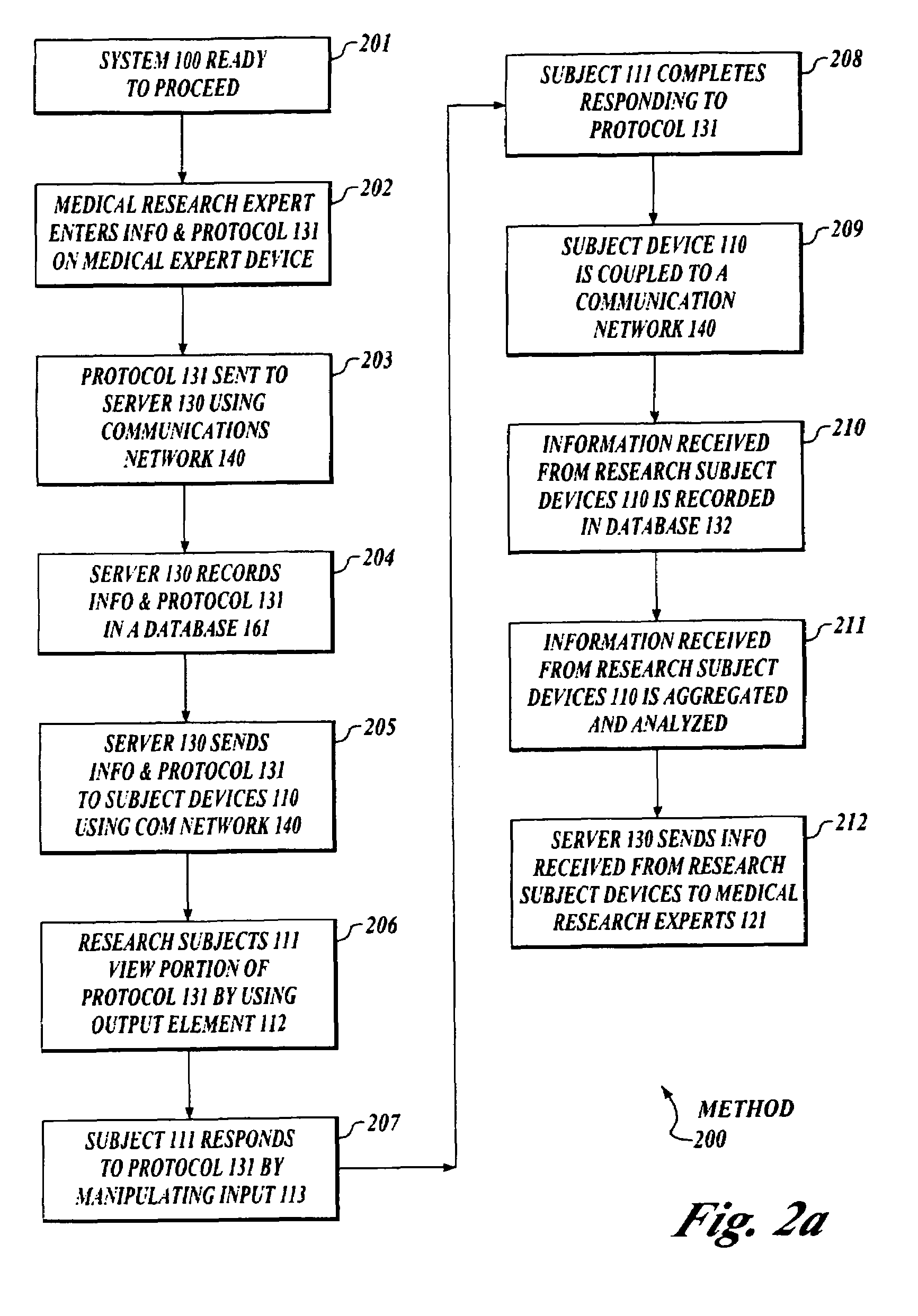Research data collection and analysis
a technology for collecting and analysing data, applied in the field of research data collection and analysis, can solve the problems of time-consuming or inefficient researchers, inability to respond to incoming data in real time, and inability for investigators to evaluate data or change experimental designs
- Summary
- Abstract
- Description
- Claims
- Application Information
AI Technical Summary
Benefits of technology
Problems solved by technology
Method used
Image
Examples
Embodiment Construction
[0023]In the following descriptions, a preferred embodiment of the invention is described with regard to preferred process steps and data structures. Embodiments of the invention can be implemented using general-purpose processors or special purpose processors operating under program control, or other circuits, adapted to particular process steps and data structures described herein. Implementation of the process steps and data structures described herein would not require undue experimentation or further invention.
System Elements
[0024]FIG. 1 shows a block diagram of a system 100 to collect and analyze data from human subjects engaged in medical research using a protocol or other intelligent message, which acts in place of a researcher, investigator, clinician or other medical expert.
[0025]A system 100 includes a set of subject devices 110, a set of medical research expert devices 120 and a server device 130. The subject device 110, the medical research expert device 120 and the ser...
PUM
 Login to View More
Login to View More Abstract
Description
Claims
Application Information
 Login to View More
Login to View More - R&D
- Intellectual Property
- Life Sciences
- Materials
- Tech Scout
- Unparalleled Data Quality
- Higher Quality Content
- 60% Fewer Hallucinations
Browse by: Latest US Patents, China's latest patents, Technical Efficacy Thesaurus, Application Domain, Technology Topic, Popular Technical Reports.
© 2025 PatSnap. All rights reserved.Legal|Privacy policy|Modern Slavery Act Transparency Statement|Sitemap|About US| Contact US: help@patsnap.com



